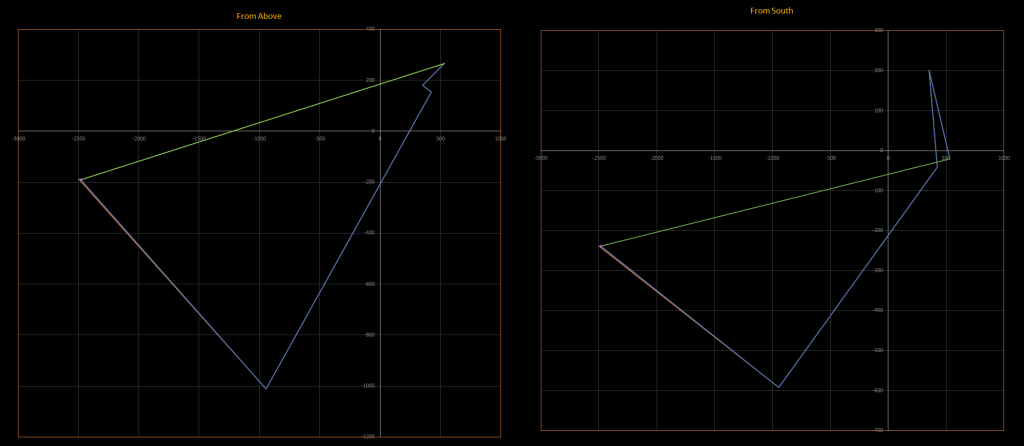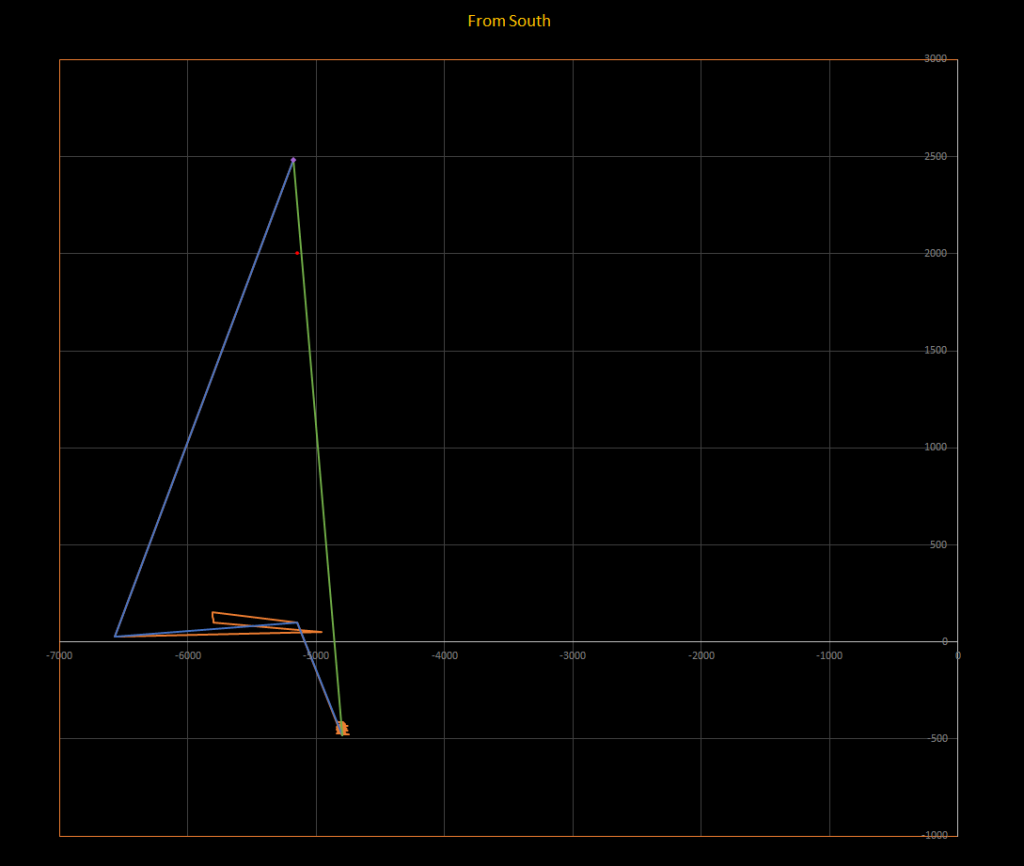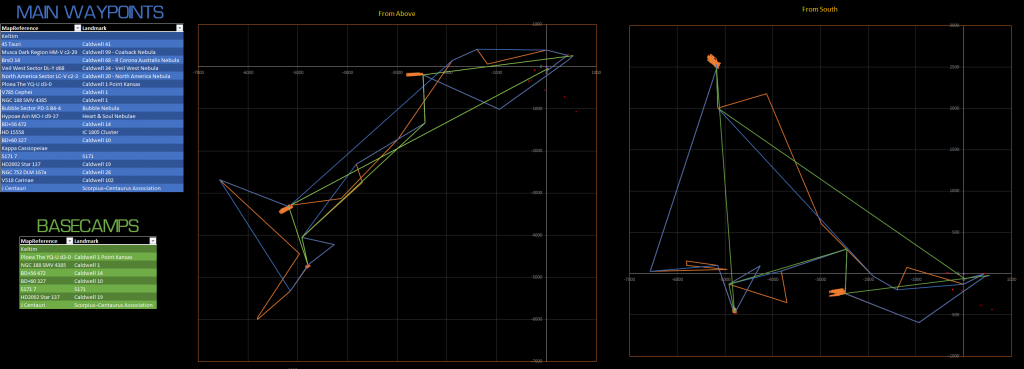We set off now on the final leg of the Celebration of Early Astronomy expedition, which will stop at our final basecamp in the Scorpius-Centaurus Association.
Dates
Start Date: February 25 2023
End Date: March 04, 2023
Distances
Basecamp Line: 3,055.73 Ly
Main Waypoints: 4,209.98 Ly
Optional Waypoints: N/A
Map, (click for full size):

Basecamp: J Centauri
Main Waypoints
- Map References quick reference list, more details below
- NGC 752 DLM 167a
- V518 Carinae
- X1 Centauri
- J Centauri
Main Waypoints Details
- Map Reference: NGC 752 DLM 167a
- POI: Caldwell 28
- Caldwell 28, also known as NGC 752 is an open cluster in the Andromeda constellation region of the sky as seen from earth. It was discovered by Caroline Herschel in 1783, and cataloged by her brother William Herschel in 1786, however an object that is now believed to be NGC 752 had also been described by Giovanni Batista Hodierna prior to 1654.
- Map Reference: V518 Carinae
- POI: Caldwell 102
- Caldwell 102, also known as the Southern Pleiades is an open cluster in the Carina constellation of the sky as seen from Earth. It was discovered by Abbe Lacaille in 1751 from South Africa. It is one of the closest clusters to our solar system, being only roughly 486 light-years from our solar system. Theta Carinae (also in game) is the brightest star in the cluster.
- SIMBAD Link
- EDSM Link
- Map Reference: X1 Centauri
- X1 Centauri and X2 Centuari (another nearby system), are two stars near each other in the Centaurus constellation area of the sky as seen from earth. Both are late B-type main sequence stars. They are fairly bright and can be seen with the naked eye in dark enough viewing locations.
- SIMBAD Link
- EDSM Link
- Map Reference: J Centauri
- POI: Scorpius-Centaurus Association
- J Centauri is B-type main sequence star located in the Scorpius-Centaurus association, the nearest OB association and stellar formation region to our own solar system at a distance of about 420 light-years.
- SIMBAD Link
- EDSM Link
Optional Waypoints
No optional waypoints for this leg.


